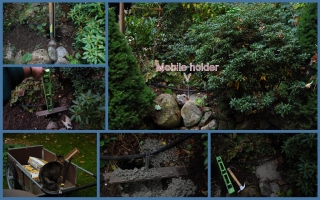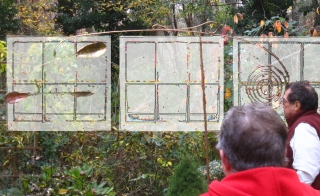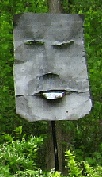Posts Tagged ‘daphne’
Three cheers for the red, white and blue!
The perennial garden is at another peak – this time with summer blooms of hydrangea, evening primrose (), bee balm (monarda), cone flower (Echinacea), lady’s mantle (Alchemilla mollis) and day lilies too various to mention (see this article). Plus continually blooming roses, emerging liatris spicata (Gayfeather) and surprise reappearance of sweet smelling daphne. And, of course, classic annuals. Everything seems early this year.
Spring blooms of Japanese dwarf spirea, clematis, astilbe and peonies have faded. The honeysuckle over the trellis is not very happy this year – thinner and fewer blooms, some blackened. I’m trusting this rugged perennial will recoup next year.
I’m a gardener on vacation – which is a special opportunity to reconnect with dirt, buds and beauty. And weeds. I used my push-pull loop hoe along the driveway bed (80 feet) to clear several years’ of embedded weeds. This is an awesome hoe that makes weeding, if not fun, at least productive.
This year’s hydrangeas look so, so blue. Roses in the Betty Garden spill profusely over the stone wall. Family and friends gathered for our almost annual July 3rd party, celebrating summer and fireworks on Humarock Beach. Scituate police enforced a bonfire ban this year but mobs of people and fireworks attended the traditional fest nevertheless.
Our house is literally abuzz outside with painting preparation. We recently reshingled and re-roofed, the next step will conclude a major exterior renovation long in the works. The carpenter who was prepping the trim discovered (how fitting) carpenter ants on the back wing of the house. Bummer. We’re waiting for the exterminator.
End of vacation – tomorrow we’ll see Cirque du Soleil (“Totem”) perform at Boston Marine Terminal.
It’s the Most Wonderful Time of the Year
(inspired by the best spring day of 2011; with apologies to Andy Williams’ version)
It's the most wonderful time of the year! The buds are all popping There's nothing that's stopping, It's finally here!!! It's the most wonderful time of the year! It's the hap - happiest time of them all! With the soil full of soiling And ants gladly toiling On peonies tall! It's the hap- happiest time of them all!
Greening shrubs that need pruning, The warblers returning, And breezes no longer so cold. Humming birds begin tuning And daphne's scent looming Like gardens awakening of old It's the most wonderful time of the year! When the bleeding heart's bleeding And dandelion weeding Brings backaches severe! It's the most wonderful time of the year!
I've got shrubs that need pruning, The warblers returning, And breezes no longer so cold. Humming birds' perfect tuning And blossoms ballooning Like gardens awakening of old It's the most wonderful time of the year! It's the most wonderful time of the year!
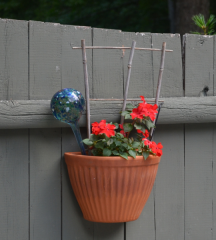
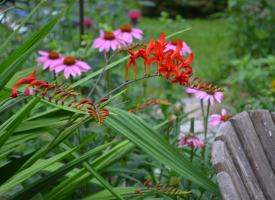
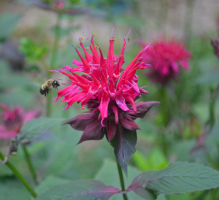
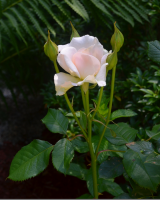
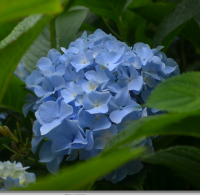
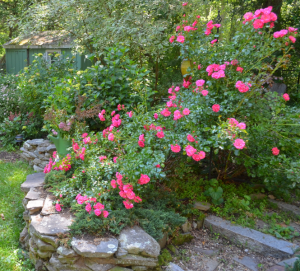
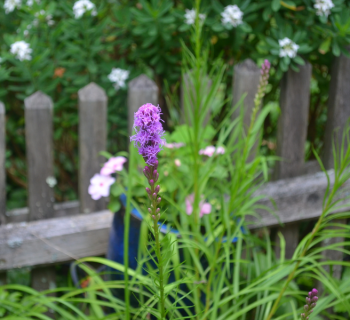
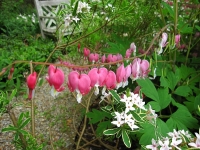
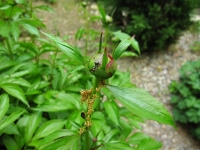
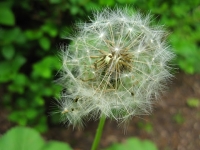
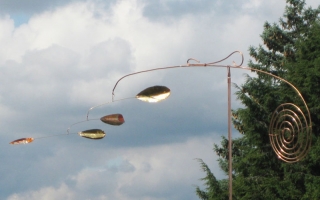
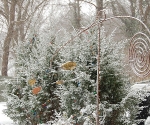 sarabande-in-snow-4
sarabande-in-snow-4 sarabande-in-snow-5
sarabande-in-snow-5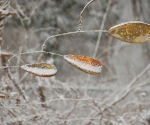 Sarabande In Snow 2
Sarabande In Snow 2